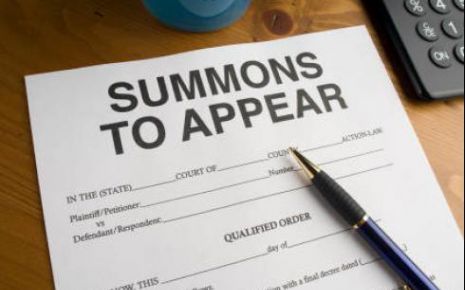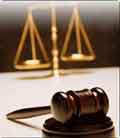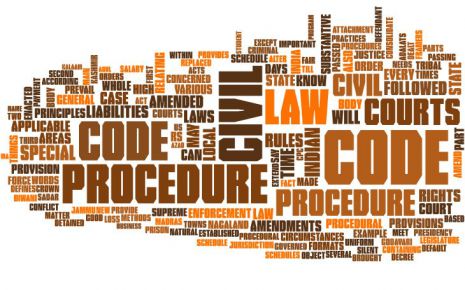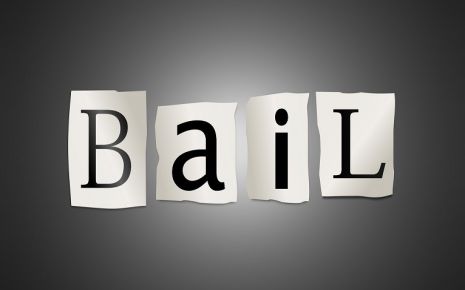Crime Scene Sketch: Evidentiary Value and Limitations
A crime scene sketch is a scaled drawing that visually depicts the layout,
significant features, and pertinent evidence of a crime scene. Forensic
investigators, investigating officers, or trained sketch artists typically
create these sketches, which offer a detailed representation of the scene's
measurements, including object placement, the position of evidence such as
bloodstains or weapons, and relevant environmental factors.
These sketches serve as a permanent record of the crime scene and assist in spatial analysis, event reconstruction, and communication among investigative team members. They are crucial in documenting the scene before any changes occur, aiding in the planning of the investigation and evidence collection process, and providing a visual aid for courtroom presentations. By precisely capturing the physical characteristics of the crime scene, crime scene sketches play a vital role in ensuring the thoroughness and integrity of criminal investigations.
The initial visual record of a crime scene is created through a crime scene sketch. This sketch aids the court in comprehending the details of the crime. Along with the rough sketch of the crime scene, photographs should also be captured from multiple angles. It is important to refrain from including unnecessary details, which can be avoided with the use of photography. The sketch should be drawn on a flat surface at the scene of the crime, rather than relying on the Investigating Officer's memory later on. A crime scene sketch is essential in indicating the placement of important items within the scene.
It is particularly helpful in showing the connection between different items and crucial pieces of evidence, such as the victim's body, exit point, and bloodstains. In some cases, the sketch can also assist in reconstructing the crime scene. This well-prepared sketch is valuable in making detailed notes in case diaries, questioning suspects, and presenting information to the Court. Therefore, the sketch serves as a complementary tool to the case diaries and photographs.
To encompass all pertinent details, all sketches must incorporate essential features: Indoor scenes must indicate room and building dimensions, while outdoor scenes require area measurements. Sketches should also include the roads, alleys, and pathways leading to the crime scene. Entry and exit points into the building or crime scene area should be clearly marked. The positions of significant items in relation to critical evidence, such as the deceased victim, must be measured and indicated. The sketch should also indicate the orientation with respect to magnetic north. If drawn to scale, the sketch must specify the scale used.
Additional information that should be included in the crime scene sketch are the name and rank of the police officer, the date and time when measurements were taken, the police station, district, crime number, and relevant legal section. The full address of the crime scene, landmarks, and the building's relative position to landmarks should also be noted. Important physical evidence and its relationship to fixed objects should be highlighted. A legend explaining the symbols used to identify objects or other noteworthy aspects should be included.
Once the rough sketch is drawn, it should not be altered. A refined sketch, drawn to a convenient scale, can be created based on the rough sketch to accurately represent the proportions of buildings and surroundings. The use of color pencils can assist in distinguishing various objects within the sketch.
By presenting the sketch to the judge and jury, lawyers are able to effectively illustrate the spatial relationships between various components of the crime scene, such as entry and exit points, the location of weapons or bloodstains, and the movements of individuals. This visual representation aids jurors in comprehending the sequence of events and the relevance of the evidence presented.
Moreover, crime scene sketches are often accepted as demonstrative evidence, enabling attorneys to reinforce their arguments and provide context for witness testimonies. Overall, these sketches play a critical role in courtroom presentations, aiding in the communication of complex information in a comprehensible and accessible manner, and contributing to a more comprehensive understanding of the case.
Furthermore, despite efforts to accurately depict the crime scene, factors such as lighting, obstructions, and complexity can hinder the precision of the sketch, resulting in incomplete or misleading representations. Moreover, even when drawn to scale, the accuracy of crime scene sketches is not guaranteed, especially if measurements are imprecise or an inappropriate scale is chosen, leading to distortions in scale and proportions.
Another significant limitation is the inability of crime scene sketches to capture dynamic elements accurately. Crime scenes are constantly changing environments, and factors such as weather conditions or tampering by unauthorized individuals can alter the scene over time. Static sketches may fail to capture these dynamic elements, making it challenging to rely on them as evidence.
Additionally, the reliability of crime scene sketches is heavily dependent on the skills and experience of the artist. Inexperienced or untrained sketch artists may produce inaccurate or insufficiently detailed sketches, undermining their credibility in court.
Despite these limitations, crime scene sketches remain valuable tools in criminal investigations and court proceedings. However, they should be supplemented with other forms of evidence, such as photographs, measurements, and witness testimony, to provide a comprehensive understanding of the crime scene and support investigative conclusions. It is essential to carefully consider and judiciously use crime scene sketches alongside other evidence, acknowledging their limitations and potential for errors.
Conclusion:
Crime Scene Sketches play a crucial role in documenting and illustrating crime scenes, aiding investigators in their analysis of the spatial layout and presentation of evidence. They offer a visual representation of the scene, making complex information more easily understandable. However, their reliability can be compromised due to various factors. The subjective nature of their creation can introduce biases or inaccuracies, potentially affecting their credibility.
Additionally, sketches may not always accurately capture dynamic elements or accurately depict scale and proportions. The quality of sketches is heavily reliant on the skills and experience of the artist, with less proficient individuals producing less dependable representations. Despite these limitations, crime scene sketches remain a valuable tool for providing an overview of the scene.
However, they should be used cautiously and supplemented with other forms of evidence, such as photographs, measurements, and witness testimonies, to ensure a comprehensive understanding of the crime scene and support investigative conclusions. Understanding the strengths and limitations of crime scene sketches is crucial for their effective utilization in criminal investigations and court proceedings.
These sketches serve as a permanent record of the crime scene and assist in spatial analysis, event reconstruction, and communication among investigative team members. They are crucial in documenting the scene before any changes occur, aiding in the planning of the investigation and evidence collection process, and providing a visual aid for courtroom presentations. By precisely capturing the physical characteristics of the crime scene, crime scene sketches play a vital role in ensuring the thoroughness and integrity of criminal investigations.
The initial visual record of a crime scene is created through a crime scene sketch. This sketch aids the court in comprehending the details of the crime. Along with the rough sketch of the crime scene, photographs should also be captured from multiple angles. It is important to refrain from including unnecessary details, which can be avoided with the use of photography. The sketch should be drawn on a flat surface at the scene of the crime, rather than relying on the Investigating Officer's memory later on. A crime scene sketch is essential in indicating the placement of important items within the scene.
It is particularly helpful in showing the connection between different items and crucial pieces of evidence, such as the victim's body, exit point, and bloodstains. In some cases, the sketch can also assist in reconstructing the crime scene. This well-prepared sketch is valuable in making detailed notes in case diaries, questioning suspects, and presenting information to the Court. Therefore, the sketch serves as a complementary tool to the case diaries and photographs.
How to Draw Crime Scene Sketch:
To begin, the investigation officer initiates the process by creating an initial depiction of the crime scene in their observation report. This preliminary sketch, although not drawn to precise measurements, must accurately convey distances, dimensions, and relevant areas. It is advisable to produce multiple sketches when multiple elements need to be included. For example, in a homicide case, one sketch may show the position of the body while another outlines the location of weapons, blood pools, and shifted furniture.To encompass all pertinent details, all sketches must incorporate essential features: Indoor scenes must indicate room and building dimensions, while outdoor scenes require area measurements. Sketches should also include the roads, alleys, and pathways leading to the crime scene. Entry and exit points into the building or crime scene area should be clearly marked. The positions of significant items in relation to critical evidence, such as the deceased victim, must be measured and indicated. The sketch should also indicate the orientation with respect to magnetic north. If drawn to scale, the sketch must specify the scale used.
Additional information that should be included in the crime scene sketch are the name and rank of the police officer, the date and time when measurements were taken, the police station, district, crime number, and relevant legal section. The full address of the crime scene, landmarks, and the building's relative position to landmarks should also be noted. Important physical evidence and its relationship to fixed objects should be highlighted. A legend explaining the symbols used to identify objects or other noteworthy aspects should be included.
Once the rough sketch is drawn, it should not be altered. A refined sketch, drawn to a convenient scale, can be created based on the rough sketch to accurately represent the proportions of buildings and surroundings. The use of color pencils can assist in distinguishing various objects within the sketch.
Evidentiary Value of Crime Scene Sketch:
In legal proceedings, crime scene sketches are highly significant as they serve as visual aids to clarify key elements of the case. These sketches provide a detailed and graphic depiction of the crime scene layout, including the placement of evidence, victims, and important landmarks. In court, they are utilized to enhance the credibility and impact of witness testimonies, expert opinions, and legal arguments.By presenting the sketch to the judge and jury, lawyers are able to effectively illustrate the spatial relationships between various components of the crime scene, such as entry and exit points, the location of weapons or bloodstains, and the movements of individuals. This visual representation aids jurors in comprehending the sequence of events and the relevance of the evidence presented.
Moreover, crime scene sketches are often accepted as demonstrative evidence, enabling attorneys to reinforce their arguments and provide context for witness testimonies. Overall, these sketches play a critical role in courtroom presentations, aiding in the communication of complex information in a comprehensible and accessible manner, and contributing to a more comprehensive understanding of the case.
Limitations of Crime Scene Sketch:
Although crime scene sketches are vital tools in both investigations and court proceedings, it is crucial to recognize their limitations. The primary challenge is subjectivity, as these sketches heavily rely on the investigator or artist's interpretations and observations. These can be influenced by personal perspectives, biases, or errors, leading to discrepancies between the sketch and the actual scene, potentially compromising its reliability as evidence.Furthermore, despite efforts to accurately depict the crime scene, factors such as lighting, obstructions, and complexity can hinder the precision of the sketch, resulting in incomplete or misleading representations. Moreover, even when drawn to scale, the accuracy of crime scene sketches is not guaranteed, especially if measurements are imprecise or an inappropriate scale is chosen, leading to distortions in scale and proportions.
Another significant limitation is the inability of crime scene sketches to capture dynamic elements accurately. Crime scenes are constantly changing environments, and factors such as weather conditions or tampering by unauthorized individuals can alter the scene over time. Static sketches may fail to capture these dynamic elements, making it challenging to rely on them as evidence.
Additionally, the reliability of crime scene sketches is heavily dependent on the skills and experience of the artist. Inexperienced or untrained sketch artists may produce inaccurate or insufficiently detailed sketches, undermining their credibility in court.
Despite these limitations, crime scene sketches remain valuable tools in criminal investigations and court proceedings. However, they should be supplemented with other forms of evidence, such as photographs, measurements, and witness testimony, to provide a comprehensive understanding of the crime scene and support investigative conclusions. It is essential to carefully consider and judiciously use crime scene sketches alongside other evidence, acknowledging their limitations and potential for errors.
Conclusion:
Crime Scene Sketches play a crucial role in documenting and illustrating crime scenes, aiding investigators in their analysis of the spatial layout and presentation of evidence. They offer a visual representation of the scene, making complex information more easily understandable. However, their reliability can be compromised due to various factors. The subjective nature of their creation can introduce biases or inaccuracies, potentially affecting their credibility.
Additionally, sketches may not always accurately capture dynamic elements or accurately depict scale and proportions. The quality of sketches is heavily reliant on the skills and experience of the artist, with less proficient individuals producing less dependable representations. Despite these limitations, crime scene sketches remain a valuable tool for providing an overview of the scene.
However, they should be used cautiously and supplemented with other forms of evidence, such as photographs, measurements, and witness testimonies, to ensure a comprehensive understanding of the crime scene and support investigative conclusions. Understanding the strengths and limitations of crime scene sketches is crucial for their effective utilization in criminal investigations and court proceedings.
Law Article in India
Legal Question & Answers
Lawyers in India - Search By City
LawArticles
How To File For Mutual Divorce In Delhi

How To File For Mutual Divorce In Delhi Mutual Consent Divorce is the Simplest Way to Obtain a D...
Increased Age For Girls Marriage

It is hoped that the Prohibition of Child Marriage (Amendment) Bill, 2021, which intends to inc...
Facade of Social Media

One may very easily get absorbed in the lives of others as one scrolls through a Facebook news ...
Section 482 CrPc - Quashing Of FIR: Guid...

The Inherent power under Section 482 in The Code Of Criminal Procedure, 1973 (37th Chapter of t...
The Uniform Civil Code (UCC) in India: A...

The Uniform Civil Code (UCC) is a concept that proposes the unification of personal laws across...
Role Of Artificial Intelligence In Legal...

Artificial intelligence (AI) is revolutionizing various sectors of the economy, and the legal i...








Please Drop Your Comments